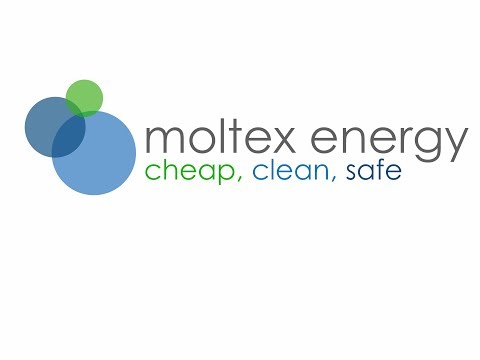Nuclear Reactors 723 - Moltex Energy Turns To Crowdfunding For Its Molten Salt Reactor - Part 1 of 3 Parts
Part 1 of 3 Parts
There are many problems with nuclear power but one of the biggest is the cost of licensing and construction a nuclear power reactor. The cost of nuclear construction is steadily rising while the cost of renewables and natural gas. Now a group in the U.K. is trying to pioneer a new method of funding a molten salt reactor.
One hundred and fifty-six funders have committed to three hundred and fifty million dollars in a crowdfunding project to construct a new type nuclear reactor based on using a liquid form of a metal salt (MSR). The company running the crowdfunding project is named Moltex Energy. Moltex calls its MSR a stable salt reactor (SSR). They claim that it would make nuclear power safer and cheaper than the expensive giant nuclear power reactors that have been providing electricity for over sixty years. This same claim is made by many companies working on what are called “Generation IV” (Gen IV) alternative nuclear power reactors. They have also emphasized that, in general, nuclear power is “green” because it emits no carbon during operation.
Simon Newton is the Moltex business development director. He said, “Our success in crowdfunding, which surprised us, may tell us something about public attitudes to new forms of nuclear power. Climate change is upon us and there are many individuals who may be frustrated by the slow pace of government action”.
Moltex has a lot of competition across the world in the race to construct Gen IV nuclear power reactors. Work on Gen IV nuclear power reactors is being carried out in the U.S. and Canada, Europe, China and Russia. In most cases, this research is being funded by organizations both public and private with deep pockets. ARC Nuclear Canada is being funded by GE-Hitachi. TerraPower in the U.S. is being partially funded by Bill Gates. General Fusion in Canada is being bank-rolled by Jeff Bezos.
The SSR being developed by Moltex is a box that contains fuel rods which contain salt combined with either uranium or thorium. It can also burn plutonium extracted from spent nuclear fuel. The fuel rods dangle in a huge bath of additional molten salt. The molten salt bath absorbs the heat emitted by the fission reaction and uses it to boil water which drives steam turbines to generate electricity.
The heat exchange, coolant and turbine technologies are similar to those used in a conventional nuclear power reactor. However, the MSRs being developed operate at normal sea level atmospheric pressure as opposed to high pressure conventional water-cooled power reactors which are currently used to generate electricity.
Moltex says that physics prevents its SSRs from overheating. The fission reaction slows down as temperature rises. If it goes beyond a threshold, the fission reaction stops. SSR safety is insured by their natural shutdown. Moltex says that conventional reactors are safe but that it is very expensive to ensure that safety. Moltex says that ultimately Gen IV reactors produce less waste than conventional reactors, can more easily burn nuclear waste and will be less likely to meltdown or explode.
The World Nuclear Association is an industry advocacy group which supports the expansion of nuclear power for the generation of electricity. They said, “All (Gen IV) systems represent advances in sustainability, economics, safety, reliability and proliferation-resistance.” Some of the competitors of Moltex in the U.S. are ThorCon, Flibe Energy and TerraPower. China has more Gen IV projects in development than any other company in the world. Nuclear power has been fading in the developed world and Moltex and other countries have been claiming that nuclear power should be considered green power that would help mitigate climate change.
Please read Part 2
